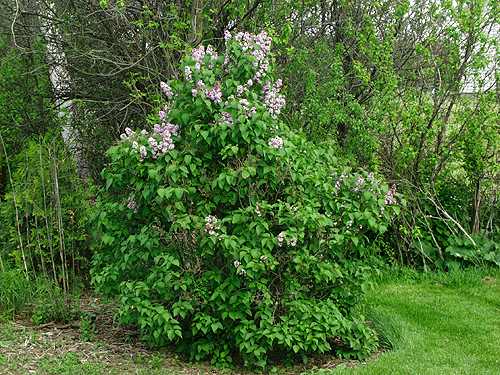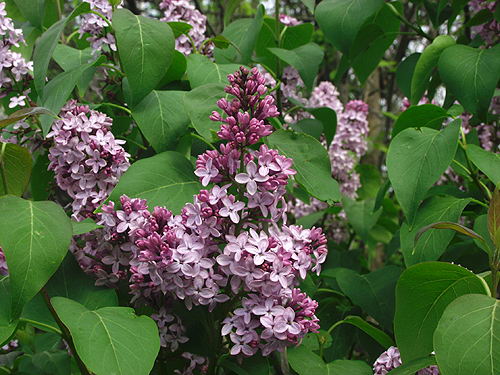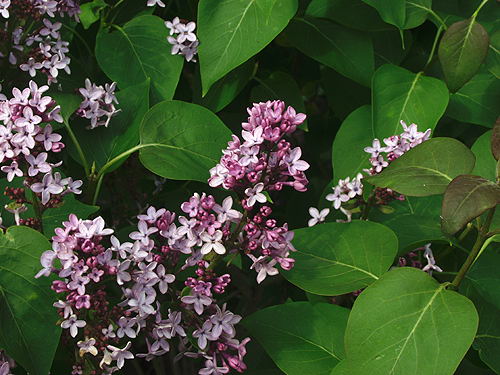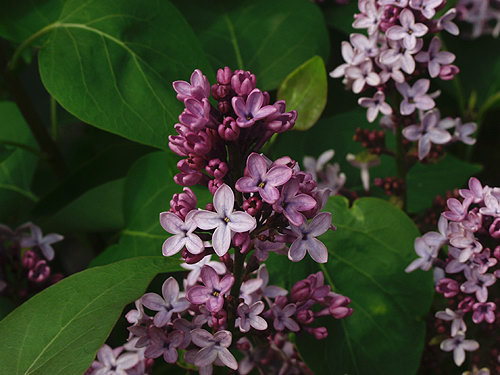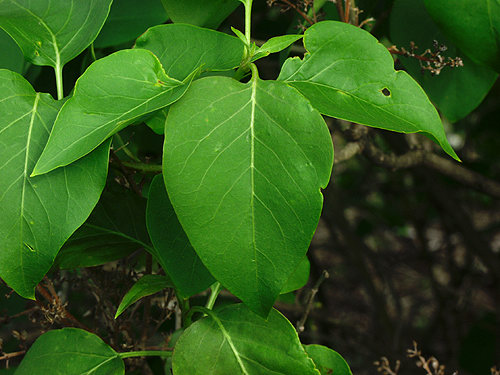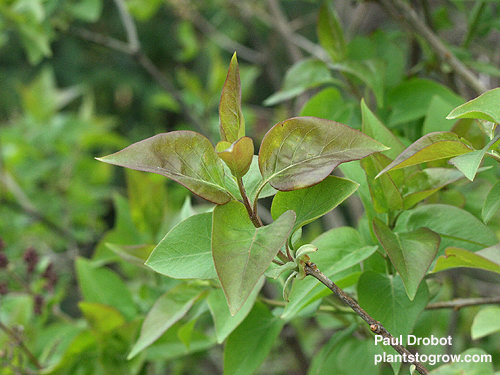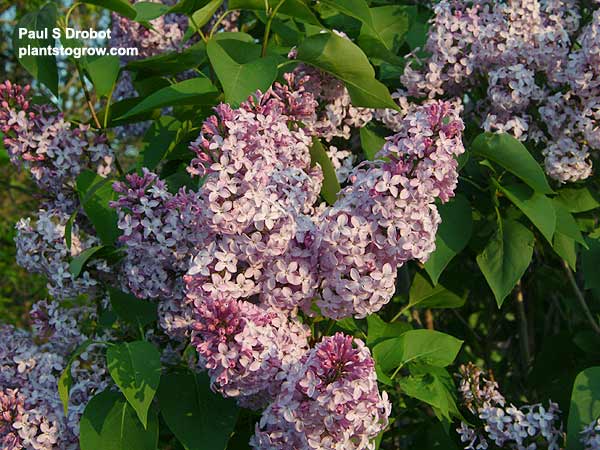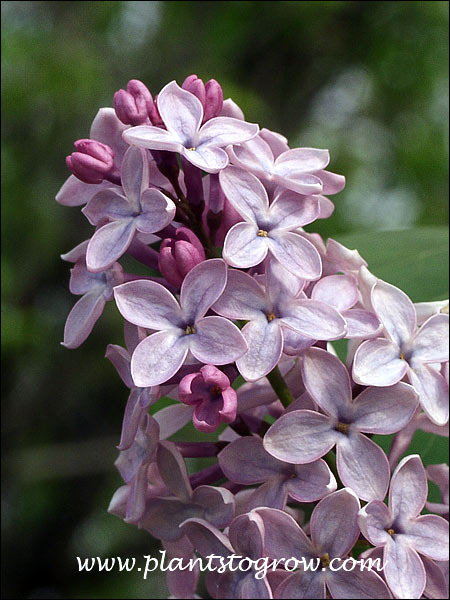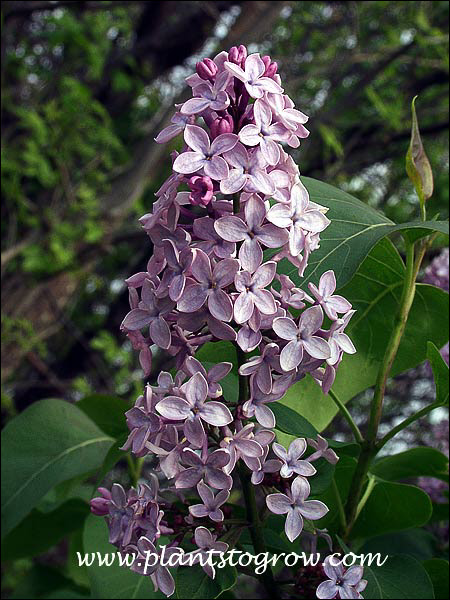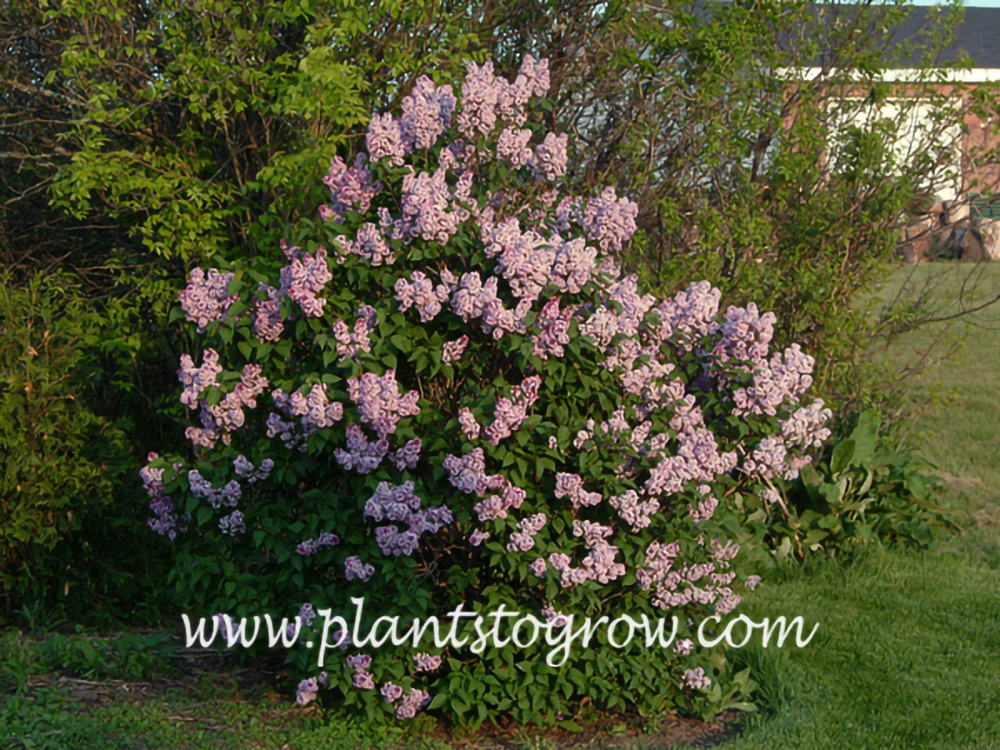| Description | Purple Lilac (Syringa vulgaris) A vintage plant that is still a good addition to the landscape. This Lilac is tall with a wide spread and prefers a sunny location. |
|---|---|
| Pronunciation | (si-RING-A)(vul-GAR-is) |
| Plant Type | All Plants, Shrubs Deciduous |
| Hardiness Zone | 3-7 |
| Sunlight | full, I have been asked many times "Why doesn't my Lilac flower as good as before". The reason is usually the amount of light. Many plants get less light as the trees grow larger around them. Also many times, Lilacs are plant in one direction light. This means one side flowers more than the other |
| Moisture | average, doesn't like soggy |
| Soil & Site | average |
| Flowers | The flowers come in many colors depending on the cultivar. Common lilac is lilac purple but there is also white, pink, blue, violet, magenta plus bi-colors. The very fragrant flowers are a 4-8 inch long panicle. |
| Fruit | beaked seed capsules |
| Leaves | Opposite, simple, glossy green leaves that can suffer from powdery mildew in the fall. Will form a dense clump that consists of some thick old stems and many newer suckers. |
| Stems | raised lentcels on stem |
| Dimensions | 8-15 plus feet tall by 8-10 spread, too large for use near the house, best used as specimen plants or in shrub borders, can be used on corner planting s as long as given 6-8 feet from the corner |
| Maintenance | Since Lilacs bloom on next season’s wood, prune after they are done blooming. There are many different ways to prune a Lilac. The most drastic is to cut them down to the ground. I have had ones sucker back and regrow while others that didn't make it using this method. You can cut out the old stems and let the new suckers fill in thinning them to the desired amount. On many old plants we have removed all the suckers and left a few of the old stalks. Pruning them up to bare base stems, turning the plant into a small tree. Drastic pruning may delay flowering a few years. |
| Propagation | dividing off a sucker, soft softwood cuttings, grafting |
| Misc Facts | Lilac is native to Europe and has been in cultivation since the 16th century. When I am traveling and see Lilacs growing in clumps out in or near the edge of a field, I will always bet that there was a farm house near and these plants where planted in this spot. |
| Author's Notes | I grew up with large Lilacs growing in my mom and dad's yard. We always looked forward to using the very fragrant flowers as cut flowers. |
| Notes & Reference | #01-Manual of Woody Landscape Plants (Michael Dirr), #03-The Hillier Manual of Trees and Shrubs (Hillier Nursery), #55-The Garden Book for Wisconsin (Melinda Myers) |

Cart
